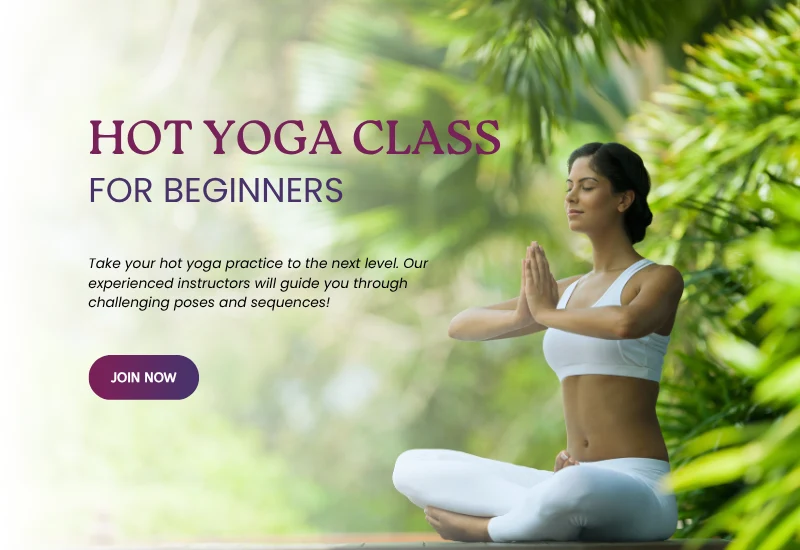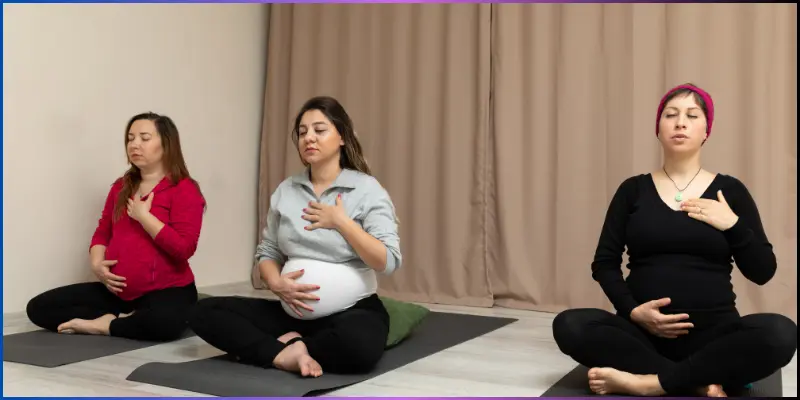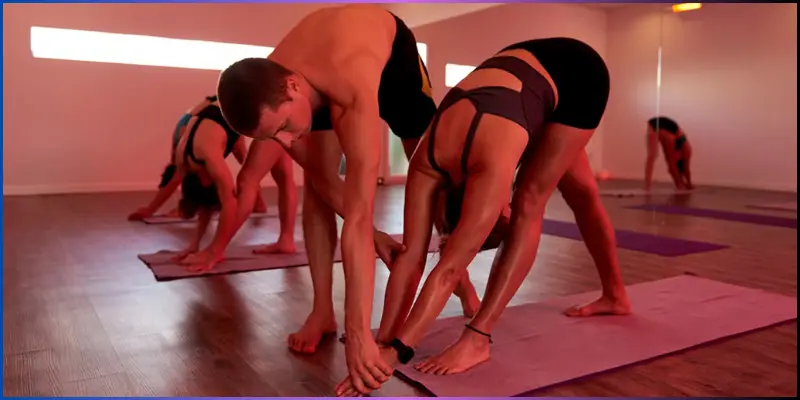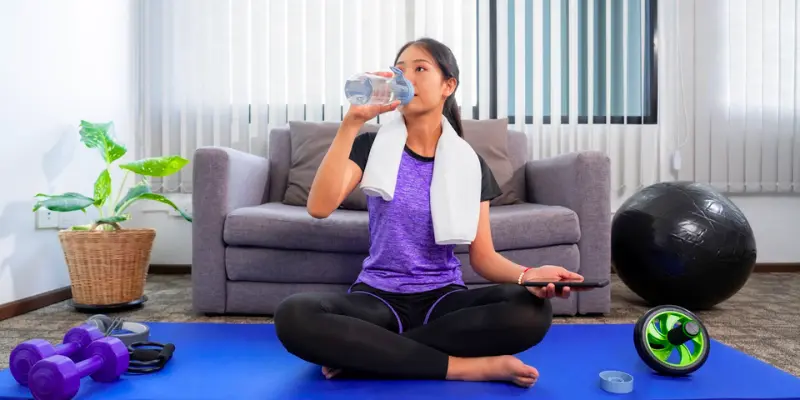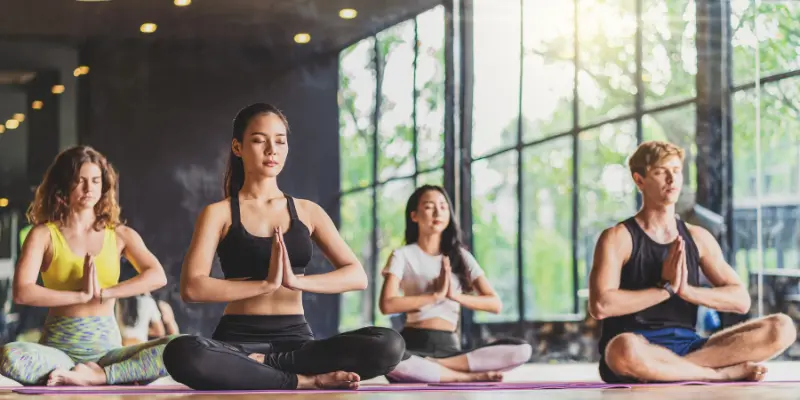Downoload PDF
"Yoga is the journey of the self, through the self, to the self." – Bhagavad Gita
Introduction to Hot Yoga
Hot yoga isn’t simply a form of working out; it is an experience that engages both mind and body to ensure that you feel good inside and outside. This form of yoga has been recommended globally over the years thanks to the healing it brings to the healed body, increased flexibility, and also helps in enhancing mental clarity. Hot yoga practices continue to grow rapidly all over the world. So what makes it special?
Hot yoga offers amazing gains for the body and the mind. Research reveals that people feel happier, calmer, increasing mindfulness and also helps clear mental clutter with each class raising positive feelings. During a 90-minute Bikram routine, men can burn upto 460 calories while women burn roughly 330, and both groups notice looser backs, shoulders, and hamstrings. The heat also helps premenopausal women build stronger bones and raises heart rates almost as much as a brisk walk. Because it tackles stress, sharpens focus, and boosts fitness all at once, hot yoga can change your daily routine in a great way.
The primary focus of this blog is to give any beginner a trustworthy guide about hot yoga and everything related to it. So, whether you are looking to start hot yoga, are looking for yoga styles to add to your collection, or wish to modernize your workout, we'll provide everything you need.
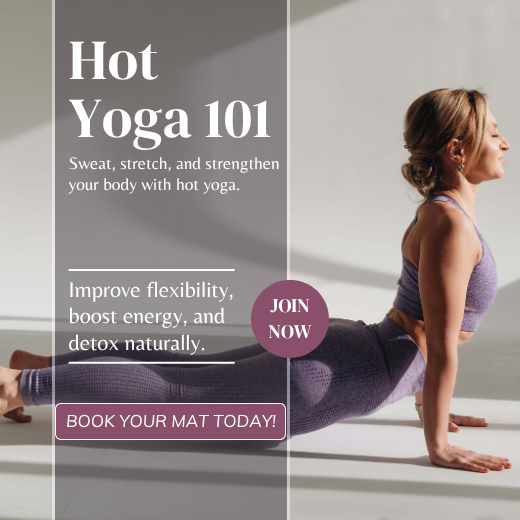
What Is Hot Yoga?
As the name suggests, it is a kind of yoga that is performed in a room temperature hot enough to be between 95°F (35°C) and 105°F (40°C) with a minimum humidity level of 40%. Do you find it warm? Yes, that’s exactly our goal! The reason why the rooms or studios are set to these temperatures is to enable your body to stretch well, sweat, perform better, and relax more.
Bikram Yoga, the most famous style of hot yoga, was developed by an Indian yogi, Bikram Choudhury. Bikram Yoga consists of a specific set of 26 poses that are executed in a precise order within a 90-minute class. Other types of hot yoga may also incorporate more vigorous styles of yoga, such as Vinyasa or Power Yoga, to keep things more engaging.
How is it different from regular yoga? Primarily, it is the heat. While traditional yoga is done in a normal temperature environment, hot yoga cranks up the heat, creating a more intense and refreshing experience.
The principle behind hot yoga is simple and straightforward. Heat increases the flexibility of your muscles, potentially allowing for deeper stretches, while sweating eliminates toxins. This type of environment calms a practitioner’s mind while also requiring them to be precise and adds an element of focus.
Benefits of Hot Yoga
What’s the secret to hot yoga’s popularity? No matter how fit you are, how relaxed you need to feel, or even if you want to try something new, hot yoga promises plenty for users. Here are some of the important benefits:
Physical Benefits
1. Flexibility:
Stretching is easier with heat. The heat in the room makes your muscles looser. Hence, you will be able to stretch into deeper poses without any risk of injuring yourself. Even those who think they are "stiff" discover with time that they are able to bend and twist in ways they never imagined possible.
Heat increases blood flow to your muscles, which makes them more flexible and less stiff. Over time, this will help improve your posture, movement and overall degree of comfort.
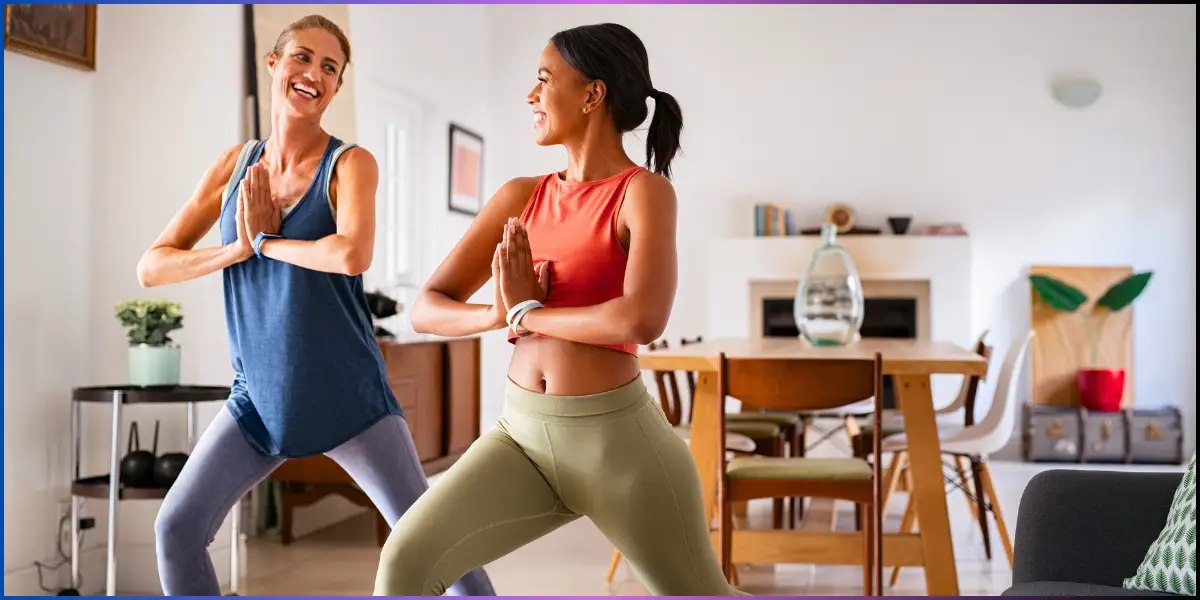
2. Strength and Balance:
Heat challenges your muscles in new ways when maintaining postures. It builds core strength and enhances balance over time, giving your body a feeling of being strong and stable.
The heat makes your muscles work that much harder, which means you're building strength and endurance. And it will also make you focus and coordinate even better, enhancing that balance you already have.

Detoxification :
Sweating with the intention of cooling off is one thing, but we will strongly recommend precautions when it comes to placing yourself in a hot room, because sweating in hot rooms becomes a whole new experience. It is also worth noting that sweating flushes out toxins and impurities. From a practitioner’s standpoint, the feeling of having a weight lifted off one's shoulders and experiencing a deep detox is euphoric.
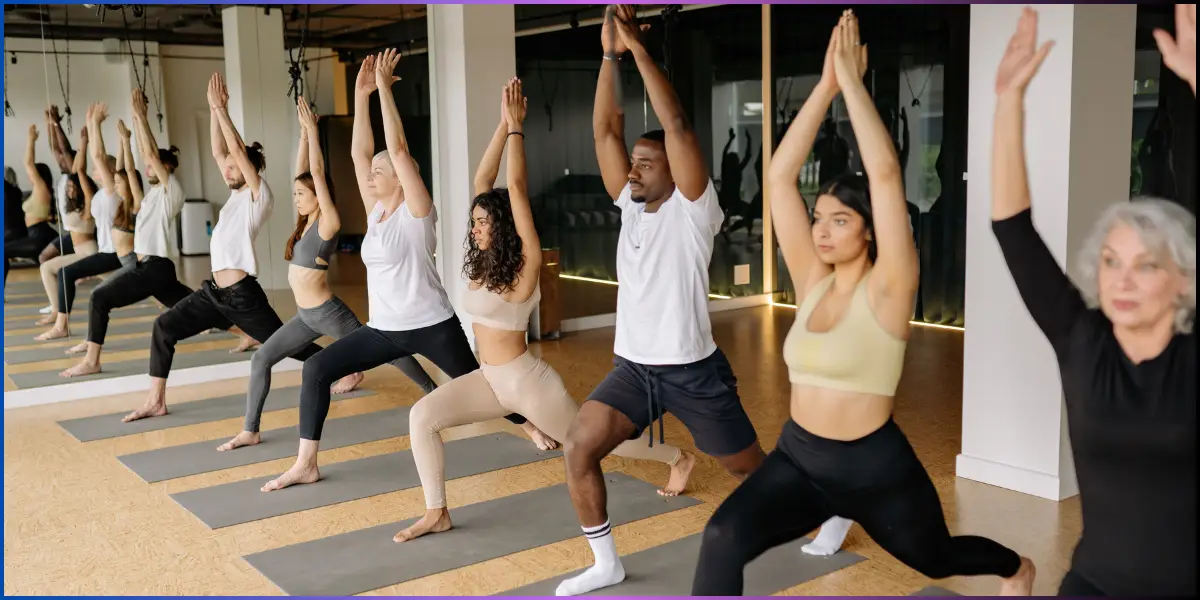
Cognitive Development:
1. Stress Relief
In hot yoga, the intensity level is so high that you have to concentrate on your breathing and movements, leaving no room for stress. By the end of every session, calmness and clear-headedness will be the order of the day.
2. Mindfulness
Yoga done in the heat creates a flowing and rhythmic meditative state. The mindful attention to each pose and breath in the heated space will surely allow you to become more attuned to your body and mind.
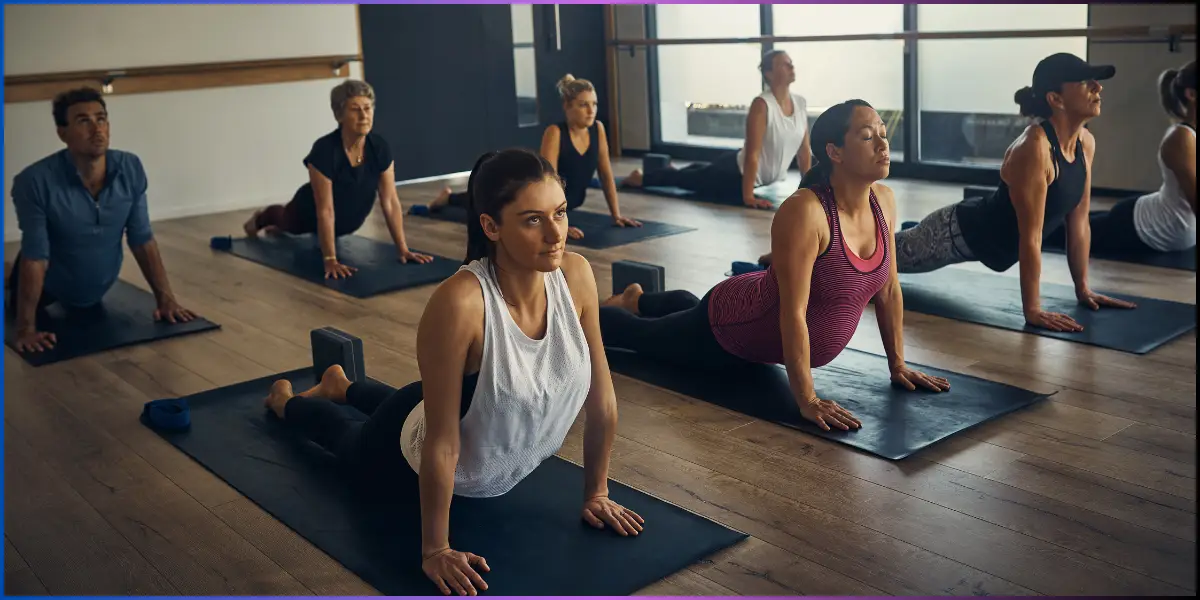
Cardiovascular Boost :
Stretching is not the only thing hot yoga can do; your heart also gets a proper and required workout. It's an added bonus that the combination of heat and movement raises your pulse rate. Even walking and cycling do that. Some practitioners claim to burn 400 to 600 calories during one session, so hot yoga is definitely a fitness booster.
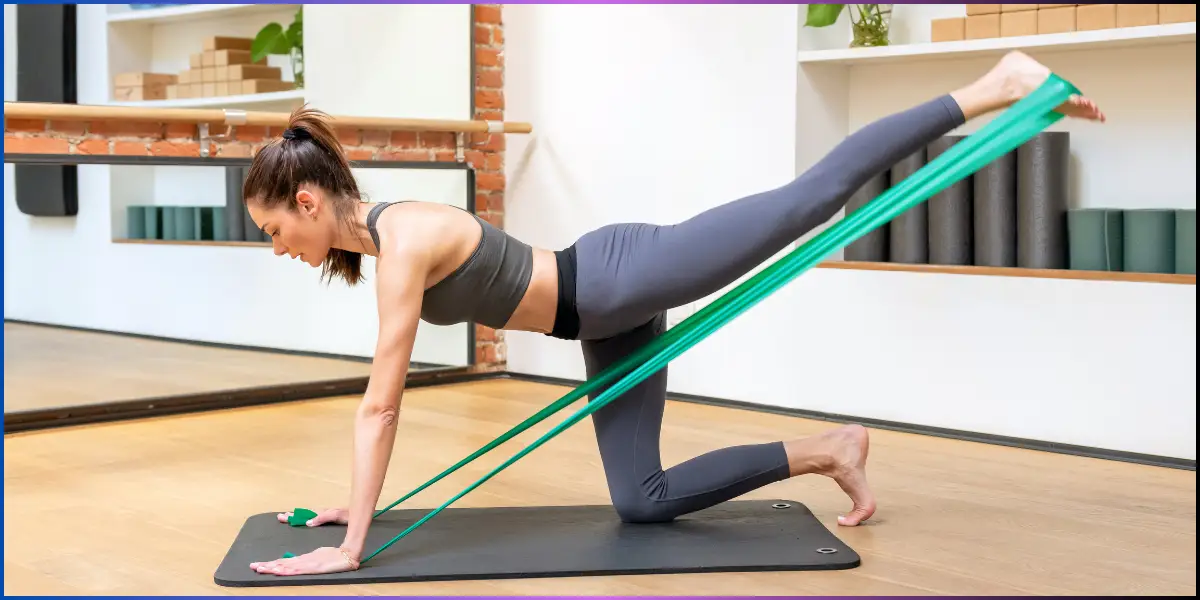
Why is Rishikesh the best for hot yoga?
If there's one spot on earth where yoga can be pure and inspiring, it is in Rishikesh, India. This town on the banks of the Ganges River has always been a haven for yogis from all over the world for the past centuries. That is why it is known as the “Yoga Capital of the World.” For people, yoga is not only about staying fit but also a way of life.
Many yoga studios and ashrams in Rishikesh have now added hot yoga to their list of offerings. Be it trying out Bikram yoga or participating in a guided hot yoga retreat, the scenic and spiritual ambiance of Rishikesh is an even greater reward. Picture yourself practicing yoga poses with the stunning Himalayan foothills in the background and the sacred Ganges flowing nearby.
The wonderful opportunity to practice hot yoga is offered in Rishikesh because of experienced instructors, authentic teaching, and a special connection to the history of yoga.
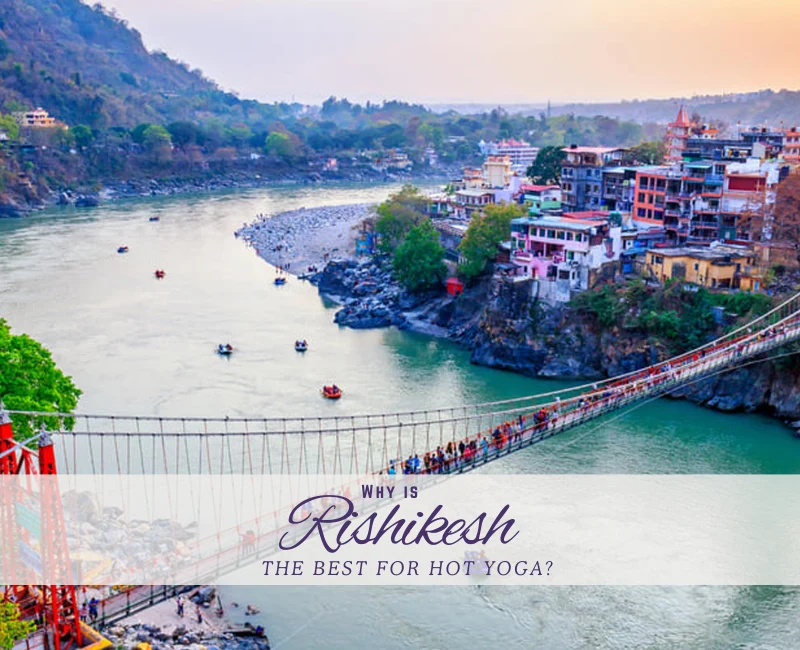
Hot Yoga Tips for Newbies
Wondering how to prepare for your first hot yoga class? Here are a few things to consider that should help:
- Hydration is Key:
- Lightweight Clothing:
- Listen to Your Body:
- Deep Breathing:
Make sure that you drink plenty of water before and after attending a class to prevent dehydration.
Less clothing is always recommended when practicing hot yoga. Comfort is essential when it comes to the heat.
If you’re new to such temperatures, take breaks during your session and listen to your body and gradually increase the heat.
Staying focused during difficult poses is possible with deep breathing. It will add calmness to your mind.
Unlike any other form of exercise, hot yoga allows you to calm down mentally and physically as you sweat. Whether you are doing it in the comfort of your house, at a local studio, or even in Rishikesh, hot yoga is an experience worth trying at least once. Ready to get into the heat and try hot yoga? Your mind and body will appreciate it.

Hot Yoga 101: What to Expect & Tips for Beginners
Hot yoga can look a little daunting the first time you enter the studio. A warm room, trickling sweat, and a fierce instructor waiting on the mat might make you pause. Still, a bit of advance warning and a dash of preparation will have you walking in like you've been doing this for years.
In this blog, I go into everything you can expect from a hot yoga class and also give tips on how participants can prepare for an enjoyable and energising class.
What to Expect in a Hot Yoga Class
The Environment
Imagine doing yoga in a room that feels like a warm, steamy retreat.The slightly humid air has several advantages: It is easier to stretch deeply and holdposes as the muscles are loosened. In addition, the heavy sweating facilitates various forms of exercise and promotes detoxification of the body.
When you enter the studio, you can expect subdued lighting and soft music in the background. All these factors create an environment that focuses your attention on relaxation. You'll find rows of yoga mats with a little space between them, and later in class you'll notice the warm smell of sweat mingling through the heating systems in the room.
Class Structure
As with most hot yoga classes, most teachers stick to a set routine, especially with Bikram yoga. With other styles of yoga, such as Vinyasa or Power Yoga, there is some leeway, but even here there are core sections that must be included:
-
Breathing exercises-
-
Yoga Poses and Flows -
-
Duration -
To focus your mind and bring it to boiling point before the real challenge of the workout, breathing exercises are practiced first.
You will perform a combination of standing, balancing and seated poses as well as stretching. One good example is a traditional Hatha yoga sequence, which follows a set structure, while other styles let you switch quickly, almost like a dance.
Classes are quite long lasting 60 minutes minimum and up to 90 minutes which allows full body engagement.
Hot yoga is meant to push you both physically and mentally. If this is your first time attending, the combination of heat and poses may feel like a lot to handle. It’s perfectly okay for you to rest or take breaks throughout the class. Instead of focusing on doing everything perfectly, remember your efforts will go a long way as long as you move with intention, breathe deeply, and honor your boundaries.

